

The latest version of Google Chrome introduced new settings that have raised privacy concerns. Google says these tools “give you more choice over the ads you see,” which sounds nice. But it’s also a jargony way to say the browser will track your web surfing and share some of your data with advertisers so they can show you ads that more effectively tempt you into spending money.
The update has not been well received by privacy advocates, and even though you can turn all of these features off (more on that later), you can also just ditch Chrome and import your data into another browser, like Firefox, Edge, or Safari.
Jumping ship is incredibly easy, and even though the process won’t transfer every single customization you’ve made to Chrome over the years—like personalized search engines and experimental flags—you’ll be able to pick up where you left off in no time.
How to import bookmarks and other Chrome data to Firefox
If you care about privacy, Firefox is a great alternative to Chrome. It’s free, fast, highly customizable, and easy to use. It also has a great track record when it comes to preventing cookies from following you around the web.
Start by downloading Firefox (available for all major operating systems) and opening it.
1. From the main navigation bar, go to File, then Import from another browser. This will open a data transfer tool in a new tab.
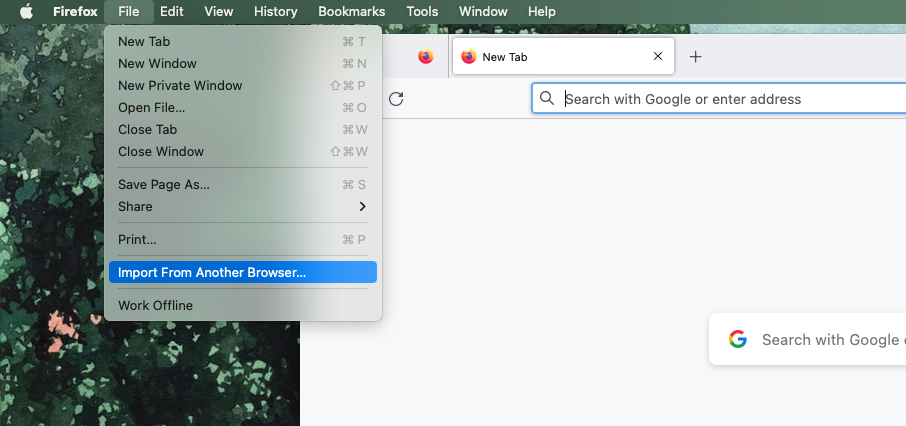
2. Firefox will automatically detect other browsers on your system and all user profiles or sessions saved to each one. Use the dropdown menu to select the session and browser you want to import your data from.

3. Click the plus sign next to Import all available data to customize what you want to transfer from Chrome. By default, the checkboxes next to Bookmarks, Saved logins and passwords, Browsing history, and Extensions will be selected. If you want to leave something behind and start fresh, you can click the checkbox again to deselect that item.
4. Finish by clicking Import.
Firefox will immediately organize your bookmarks in its own bar, have your browsing history readily available, and whenever you need a password, it’ll offer the right one. Extensions may require further tweaking, but you’ll know if one requires your attention by clicking the extensions icon to the right of the address bar—it looks like a puzzle piece.
[Related: 11 hot Firefox tips and tricks that might finally convince you to switch browsers]
How to import your Chrome data to Edge
Microsoft’s recently renewed Edge browser is built on Chromium, which means it plays particularly nice with Google’s offer. This also means that importing Chrome bookmarks and other data to Edge is both easy and intuitive, and you’ll also be able to import a lot more than with other browsers.
1. Open Edge and go to Settings—find it by clicking on the three dots in the upper right corner of your screen.
2. In the new tab, under Profiles, go to Import browser data.

3. Select Import next to Import data from Google Chrome.
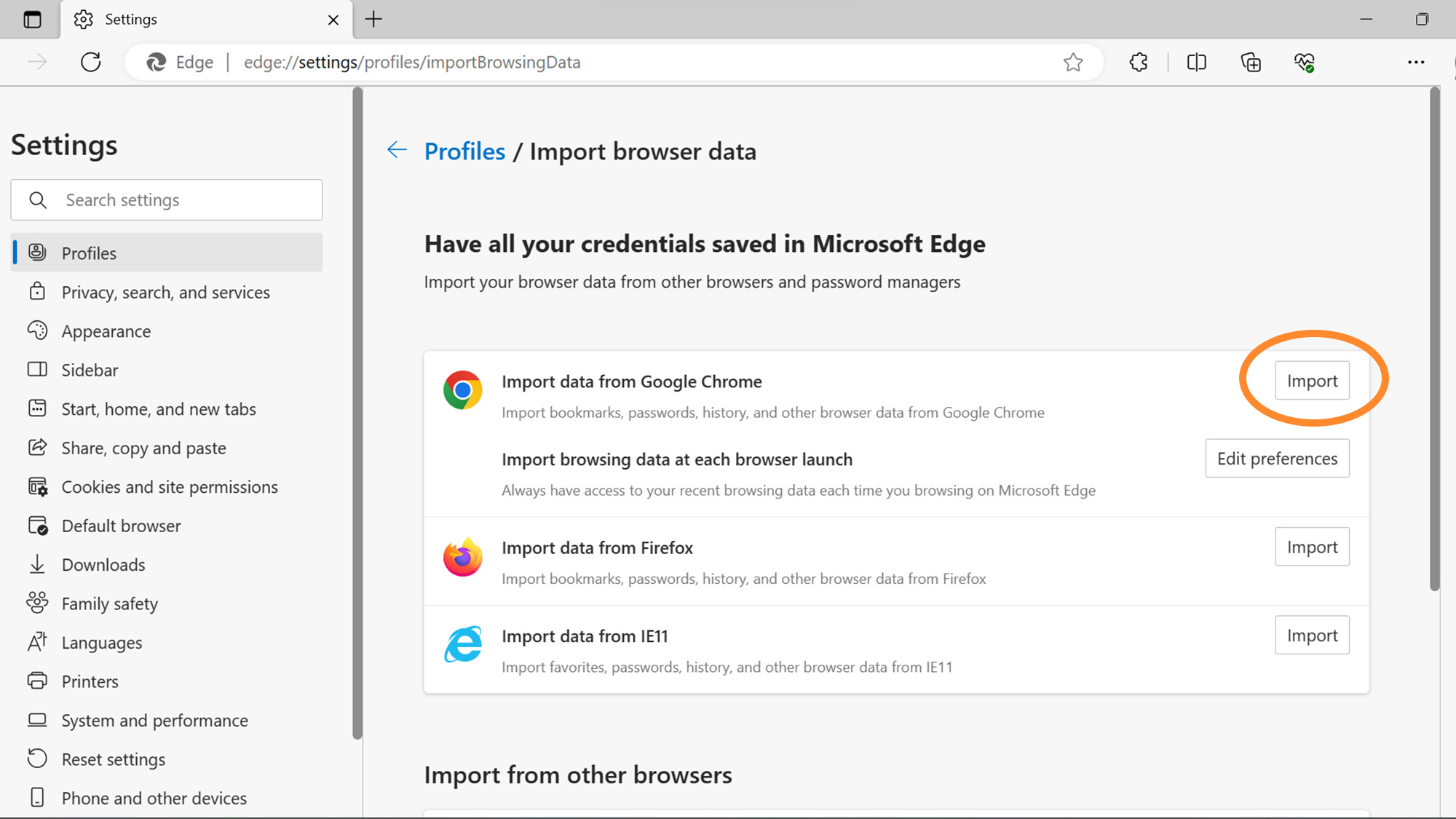
4. In the emerging dialogue box, you’ll see two dropdown menus—use the second to select the Chrome session you want to import data from.
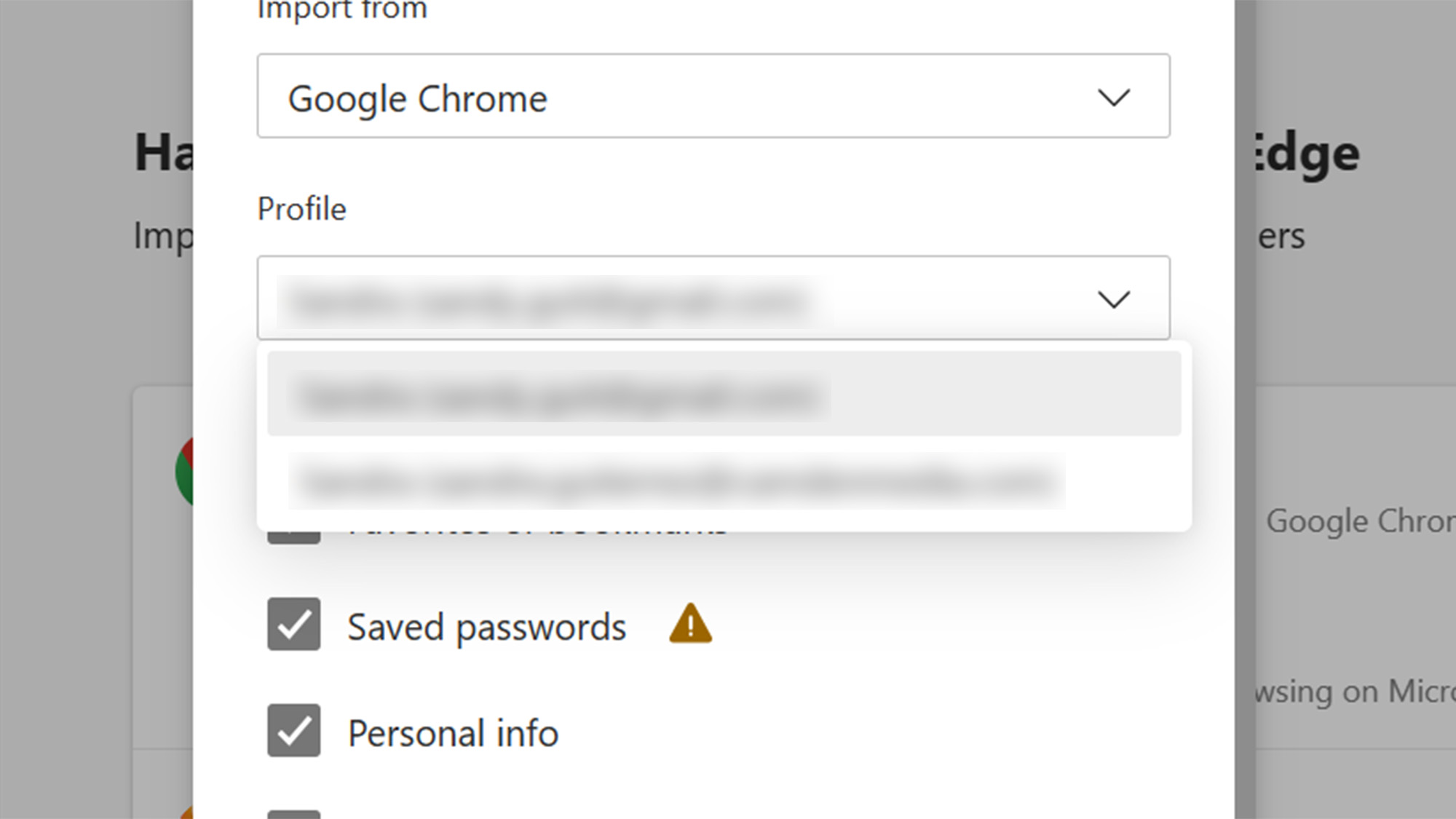
5. Use the checkboxes below to choose what you want to import from Chrome. By default, all items will be selected: Favorites or bookmarks, Saved passwords, Personal info, Payment info, Browsing history, Settings, Open tabs, and Extensions. If you want to leave something behind, just click the relevant checkbox again to deselect it. When you’re done, click Import.

6. Edge will finish importing your data almost immediately, and will tell you so. All of your information will be readily available and just like you had it on Chrome. That’s the benefit of switching to a browser that’s built so similarly.
How to import Chrome data to Safari
Apple users can try the built-in Safari browser, which some say may even be better than Chrome. The only downside is that, just like mobile apps for iOS and Android, the extensions Chrome uses are different from the ones for Safari. This means you can’t import them from one browser to the other, so you’ll have to start from scratch on that front. You can, however, easily import bookmarks, history, and passwords.
1. Open Safari, go to File, hover over Import from, and choose Google Chrome.
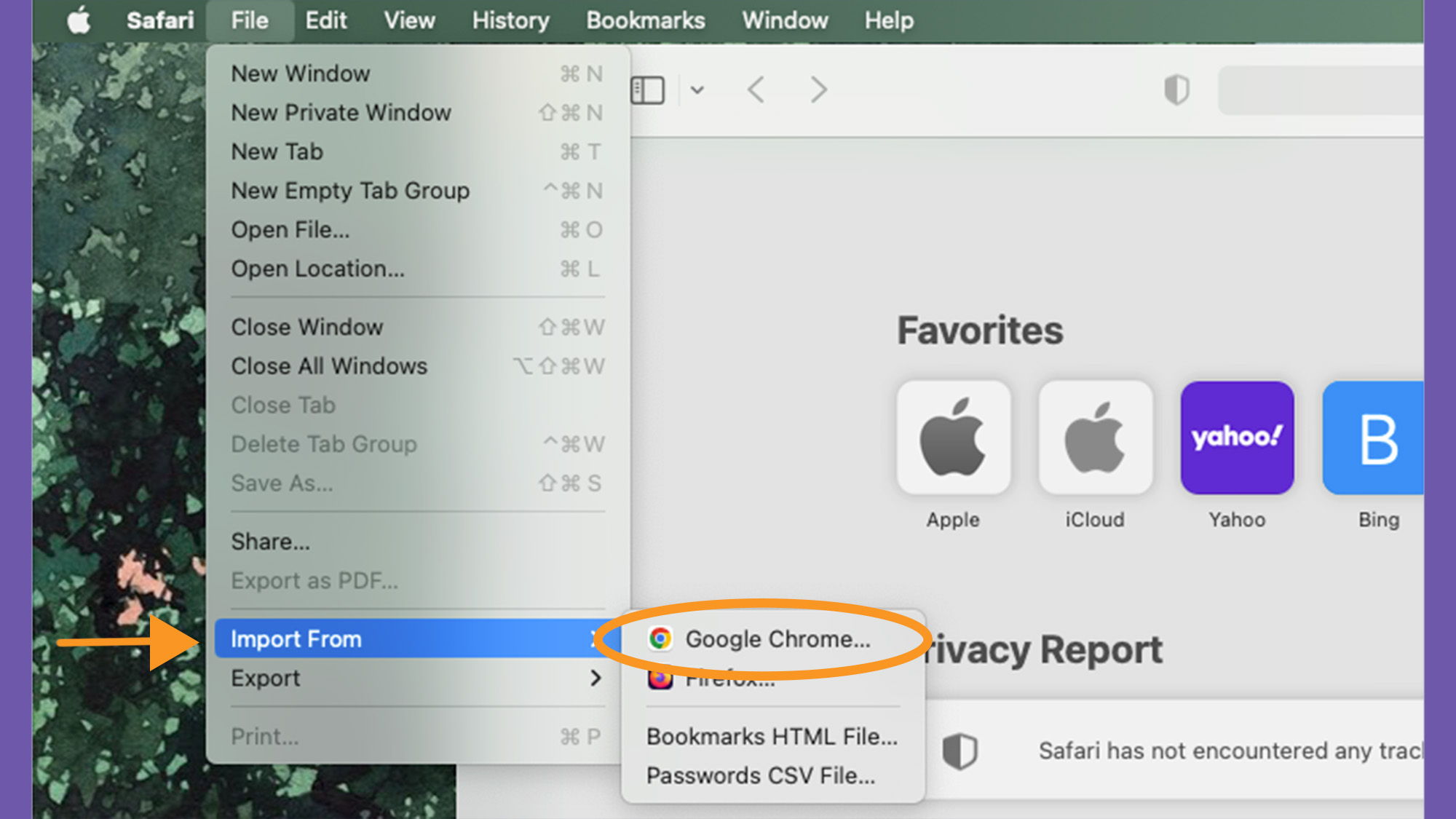
2. Safari will open a dialogue box listing all the items it’ll import from Chrome: Bookmarks, History, and Passwords. All these checkboxes will be selected by default, so if you want to leave something behind, just click on it to deselect it.

3. Once you’re satisfied with your choices, close Chrome if you haven’t already, and click Import. When it’s done, Safari will show you exactly what it did—click OK to close the dialogue box.
Your browsing history and passwords will be readily available. Unfortunately, Safari does this annoying thing where it imports your bookmarks into a folder within a folder, so you won’t immediately see your links on your Favorites bar. You can move the items and get rid of the extra folders, but you’ll have to manually drag and drop them, which can be a pain depending on the number of pages you’ve saved.

How to import data to Firefox, Edge, and Safari using CSV and HTML files
If for whatever reason the above options for Firefox, Edge, and Safari didn’t work, you can import a CSV file with your password and logins, and a HTML file with your bookmarks. You’ll just need to export this data from Chrome first.
Export your data from Chrome
1. On Chrome for desktop, click the three dots in the upper right corner of your screen and head to Google Password Manager—the manager will open in a new tab.
2. In the left sidebar, click Settings.
3. Under Export passwords, click Download file, and provide any credentials or biometrics Chrome might ask for to confirm it’s you.

4. Use the emerging explorer window to choose a location for your CSV file, then click Save.
- Note: The resulting CSV file will contain all of your credentials and is not encrypted. This means that if anybody else opens it, they’ll be able to see the username and passwords for all of your saved accounts. Don’t leave this file laying around—import it immediately and delete it as soon as you’re done with it. Then completely remove it from your hard drive by deleting it again from your computer’s trash.
5. Now you’ll need to download the HTML file with your bookmarks. Click on the three dots in the upper right corner of your screen, hover over Bookmarks, and click on Bookmark manager
6. Click the three dots in the upper right corner of the tab. Confusingly enough, these are not the same three dots that you clicked in Step 1, but you’ll find the correct ones right below them.
7. Click Export bookmarks. Use the emerging window to select the location you want to put the file in, and click Save.
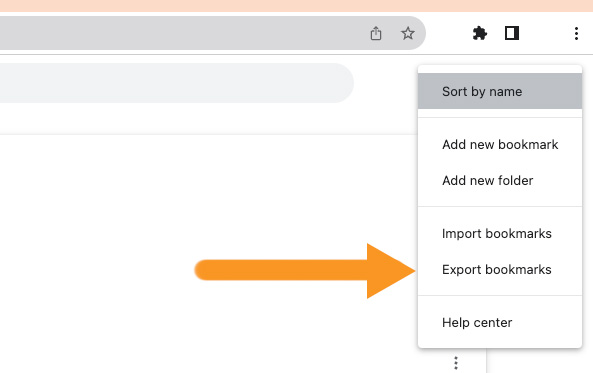
Import CSV and HTML files to Firefox
1. From the main navigation bar, go to File, then Import from another browser. This will open an import tool in a new tab.
2. Use the dropdown menu to select either Passwords from CSV file or Bookmarks from HTML file. Whichever one you choose, Firefox will open a new window so you can select the correct file. Click on it, and the browser will import the data.
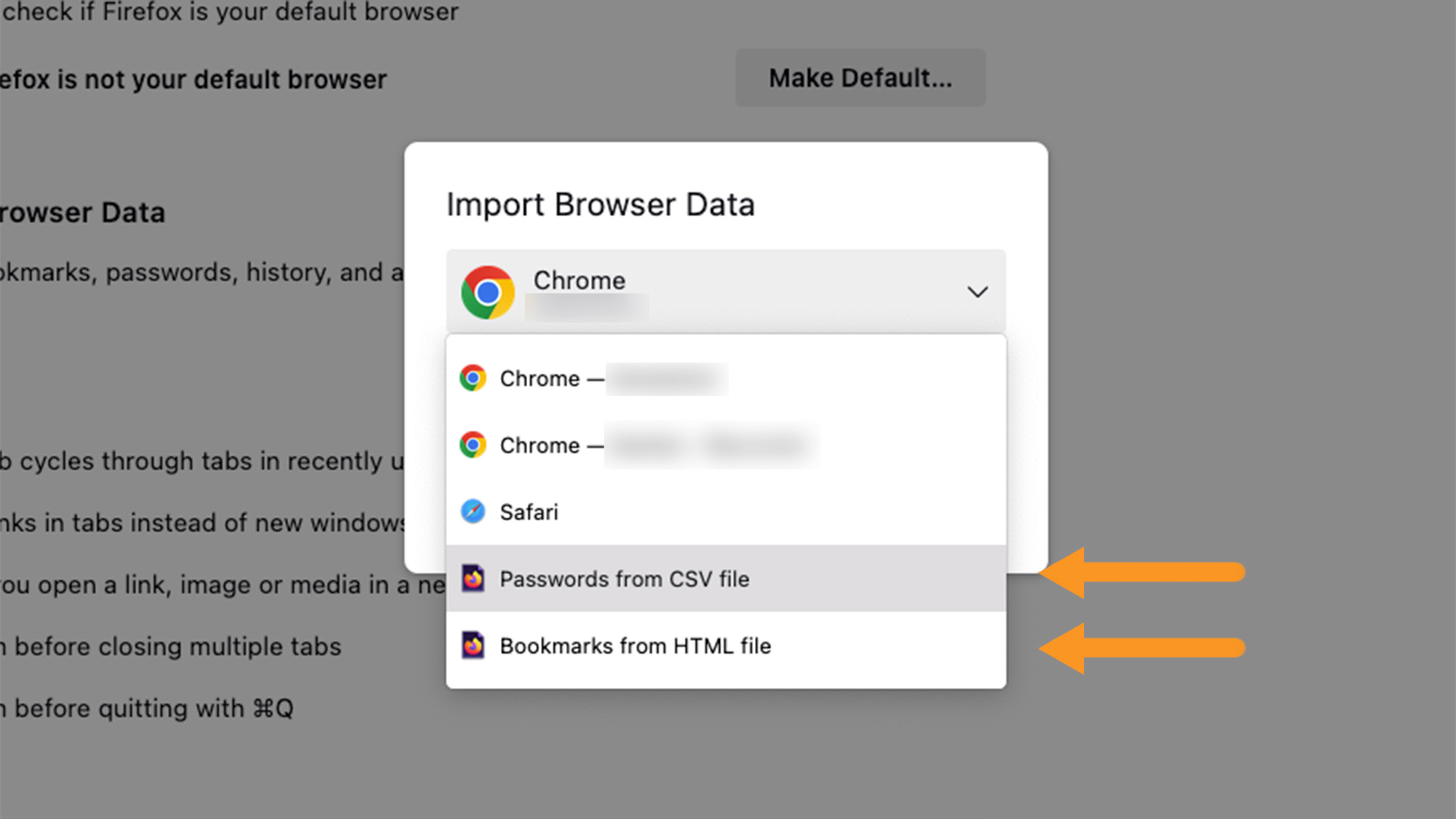
3. Repeat the process with the remaining file.
Import CSV and HTML files to Safari
1. Open Safari, go to File, Import from, and then choose either Bookmarks HTML file or Passwords CSV files.
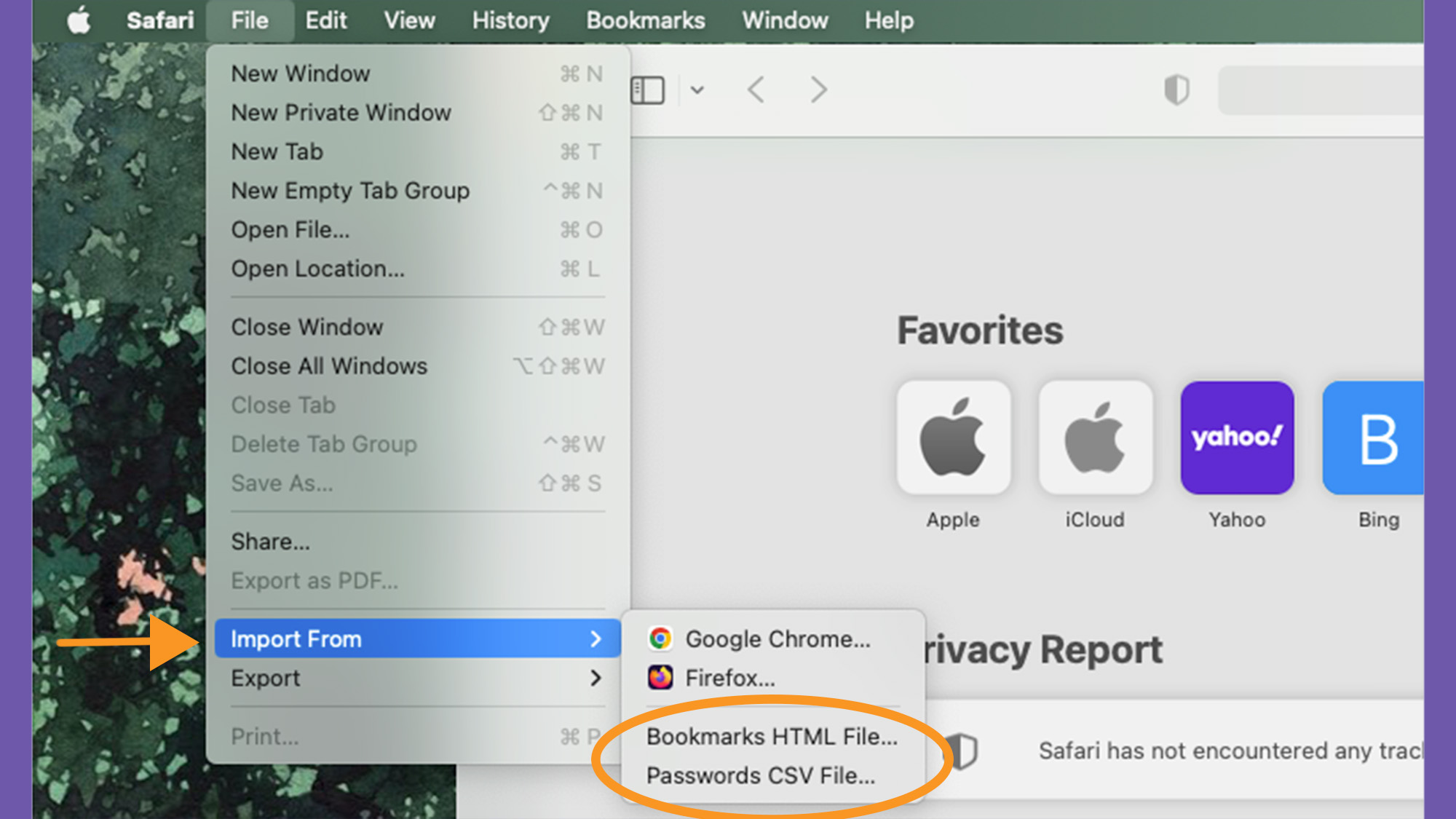
2. Use the emerging window to find the correct file and import it. When importing passwords, Safari will require your authentication (biometrics or password) to add the information to your Keychain.
[Related: 7 things Safari can do that Google Chrome can’t]
3. If you imported your bookmarks, you’re done. If you imported passwords, Safari will tell you how many of your credentials it imported. If there’s some data it couldn’t save, you can click on Open Password settings in the dialogue box and manually add the missing information.
4. Repeat the process with the remaining file.
Import CSV and HTML files to Edge
1. While using Edge, go to Settings—you can find it by clicking on the three dots in the upper right corner of your screen. Under Profiles, go to Import browser data.
2. Select Import next to Import data from Google Chrome.
3. In the emerging dialogue box, use the first dropdown menu to select either Favorites or bookmarks HTML file or Passwords CSV file.
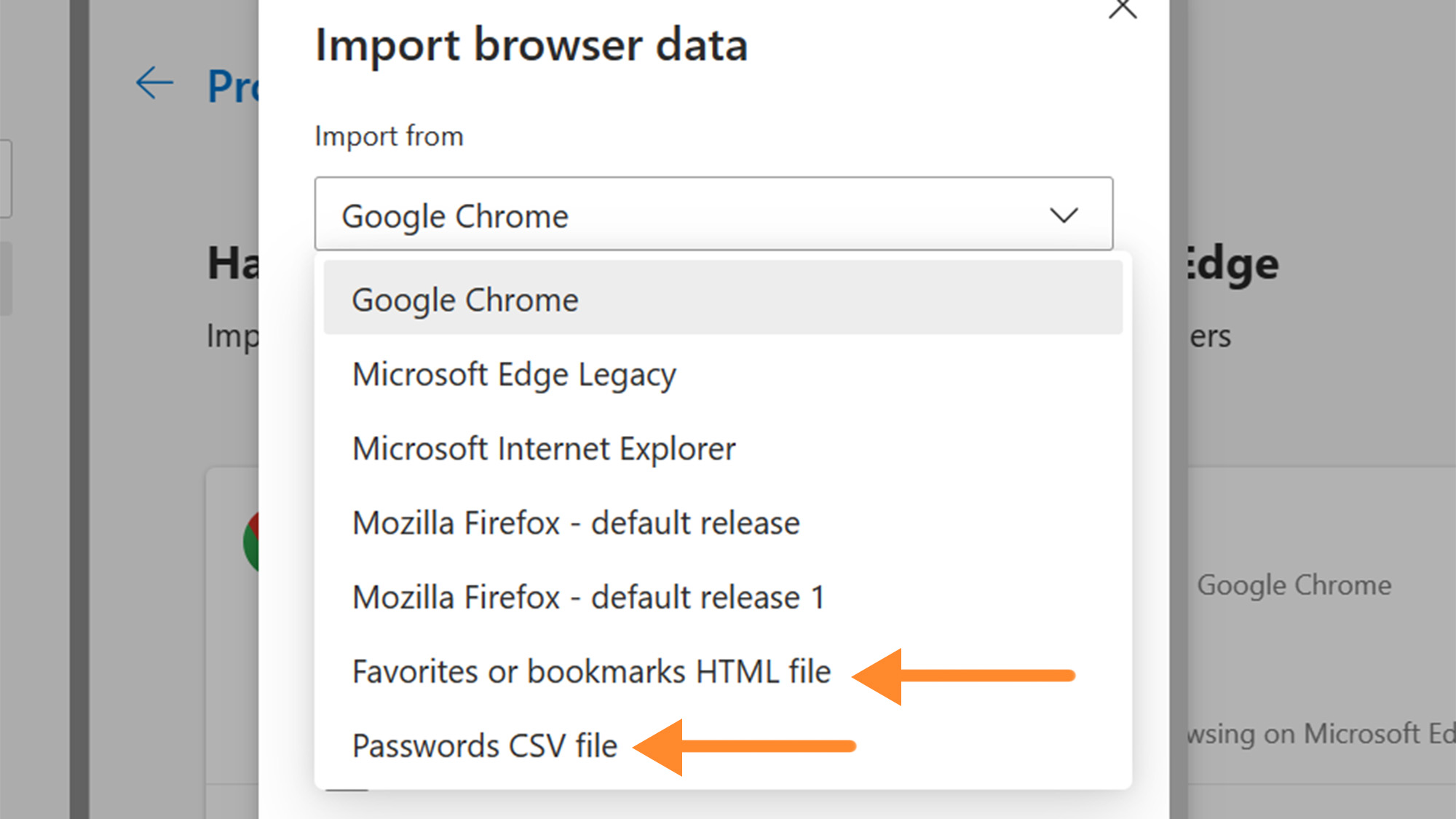
4. In the next dialogue box, click Choose file. Use the File Explorer window to pick the right file on your local hard drive. Select it and click Open. Edge will then confirm it’s done importing your data, which will be immediately available for you.

5. Repeat steps 3 and 4 with the remaining file.
How to turn off Chrome’s new privacy settings
If you’re throwing your arms in the air and asking yourself if there is a way you can just keep Chrome without the ad tracking features, the answer is yes: just turn them off.
On Chrome, go to your privacy settings or type chrome://settings/adPrivacy into the search bar. There, you’ll see three options you can click on to get more information: Ad topics, Site-suggested ads, and Ad measurement.
Ad topics analyzes your browsing history to determine topics you’re interested in. So, if you search “Yankees score” and visit the official site for Major League Baseball, Google will add “baseball” or “sports” to your topics. You can see the list of topics the browser has identified for you, and if you’re not comfortable with one of them, you can block it. Chrome will share four weeks worth of this data at a time with advertisers so they can show you stuff you might like. If you don’t want any of this, just toggle off the switch next to Ad topics.

With site-suggested ads, Chrome allows sites to show you ads based on your topics and other browsing data. You won’t be able to see a comprehensive list of the sites that can do this, but if you can think of one that you’d rather not have your data, you can block it. But again, you can disable the entire feature by toggling off the switch next to Site-suggested ads.
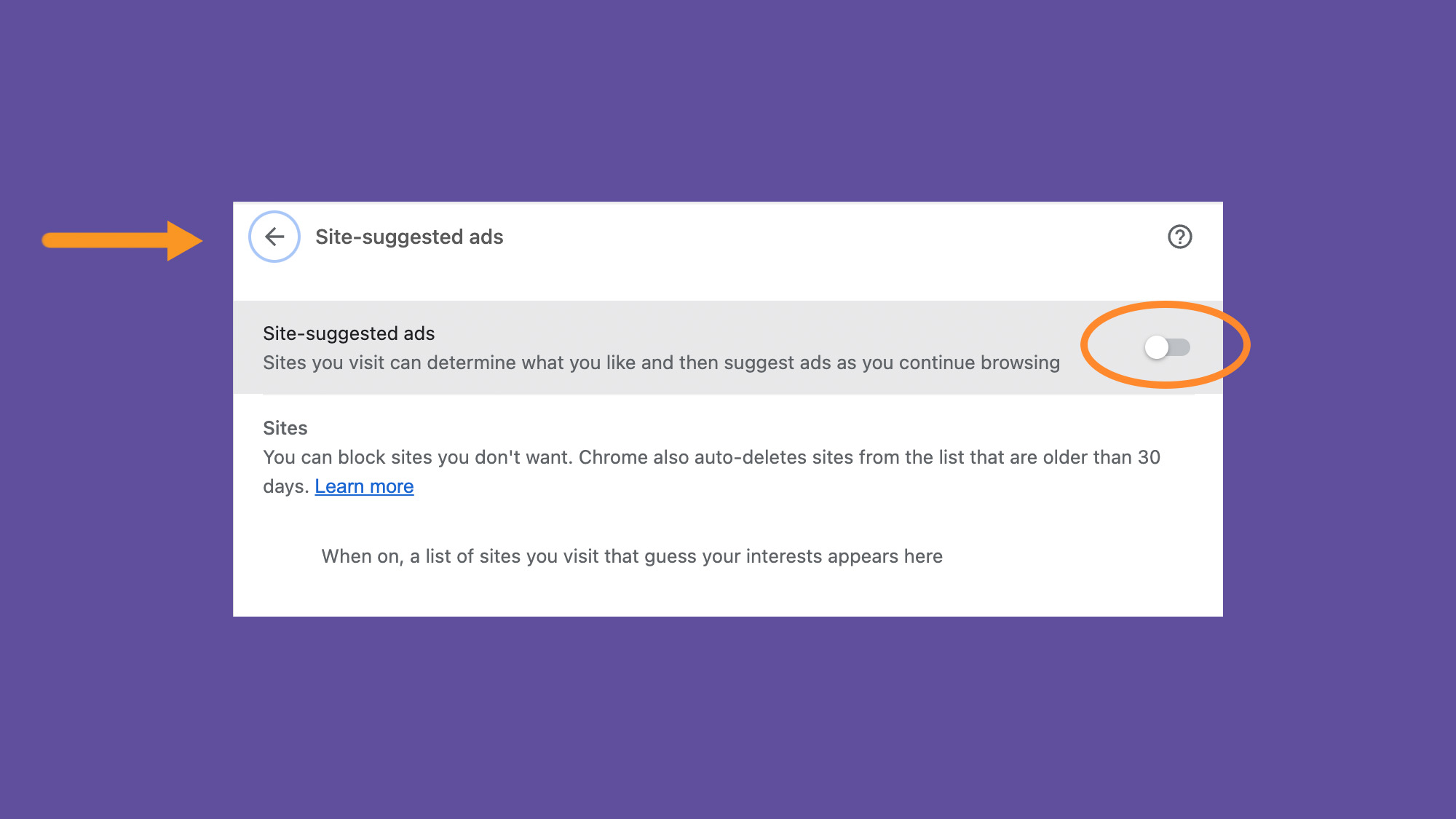
Finally, ad measurement allows Chrome to share certain data with websites so they know how effective the ads they showed you were. The browser says it constantly deletes this data, but doesn’t say how often, and explains that browsing history remains private, but it’s not clear to what extent the data is anonymized. If you don’t want to run any risks, you can just disable the option by toggling off the switch next to Ad measurement.

